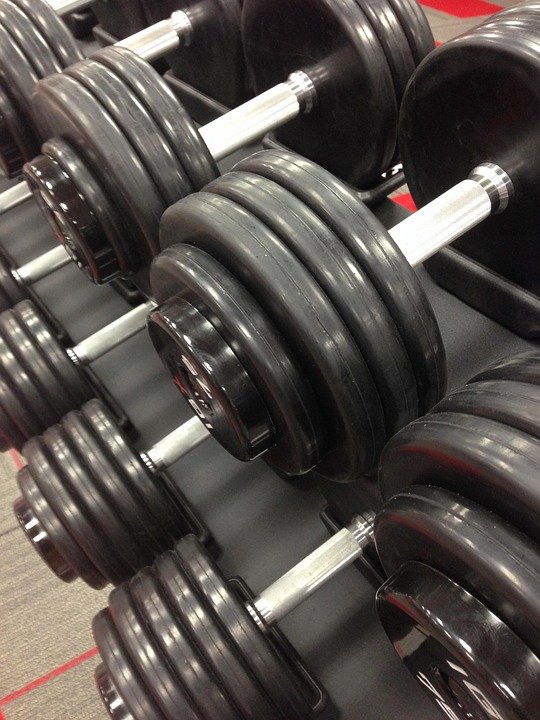Introduction to Workout Logging Apps
Logging workouts has become an essential practice for those committed to fitness, serving as a pivotal tool for tracking progress, enhancing motivation, and enabling effective program adjustments. By systematically recording their workouts, users can analyze performance trends over time, identify strengths and weaknesses, and make informed decisions to optimize training sessions.
Research shows that workout logging apps facilitate accountability and often serve as virtual personal trainers by offering tailored workout programs based on individual fitness levels and goals. This personalization helps keep individuals engaged and motivated, as they witness progress and remain focused on their fitness journeys. For example, some apps can dynamically adjust workout intensity based on user feedback, ensuring workouts remain challenging yet achievable (Source: CNET).
Additionally, the convenience of having a centralized platform for logging workouts eliminates the tediousness of manual tracking, allowing users to concentrate more on training than on recording data. Understanding the unique features and benefits of workout logging apps will guide readers in selecting the best fit for their personal fitness objectives and preferences. To learn more about keeping consistent progress, check out how to keep workouts consistent.
Criteria for Choosing the Best Apps
Selecting the best fitness app requires evaluating several key factors that ensure the app meets your specific fitness needs and goals:
- Ease of Use: A user-friendly interface with straightforward navigation, intuitive features, and quick access to workouts is crucial for sustained use. Clear instructions and easy tracking foster motivation and enhance the experience.
- Device Compatibility: The app should work seamlessly across devices such as smartphones, tablets, smartwatches, or fitness trackers. JEFIT, for example, optimizes multi-platform functionality to enhance user experience (Source: JEFIT).
- Exercise Variety: Look for apps that provide diverse workouts—strength training, cardio, yoga, and flexibility—to cater to different fitness levels and keep routines engaging.
- Analytics: Powerful tracking and analytics that offer detailed insights, including reps, sets, calories burned, and performance trends, are vital for effective monitoring and motivation (Source: CNET).
- Integrations: Syncing with other health, nutrition, and wearable devices enhances a holistic approach to fitness management.
- Community Features: Social support via forums, challenges, leaderboards, or sharing options helps foster motivation and accountability.
By carefully comparing these criteria, fitness enthusiasts can select apps that align well with their goals. For motivation tips tied to fitness consistency, see how to get your gym motivation back.
Top Workout Logging Apps of 2023
- JEFIT
Standout features include an extensive exercise database, customizable routines, and advanced progress tracking with community support. It suits beginners and seasoned athletes alike, offering both free and premium versions with enhanced analytics. Some advanced features are gated behind premium subscriptions (Source: JEFIT). - MyFitnessPal
Known primarily for nutrition tracking, it also integrates workout logging seamlessly to provide combined insights for calorie counting and exercise data. Ideal for users focusing on weight management and nutrition. However, exercise tracking is less robust than dedicated apps (Source: CNET). - StrongLifts 5×5
Specializes in the 5×5 strength training program, allowing users to track sets and weights with simple setup. Best for beginners or those focused on foundational strength training. Limited exercise variety and less suited for advanced users (Source: CNET). - FitBuddy
Features AI-driven personalized workout and nutrition plans, with a smart advisor to answer fitness questions. Suited for users who want tailored assistance but may find some AI suggestions imperfect. Being newer, its feature set is smaller compared to competitors (Source: JPost). - Nike Training Club
Offers diverse workout options including bodyweight and gym routines, with expert guidance and high-quality instructional videos. Excellent for fitness enthusiasts who value variety, though strict workout logging features are less emphasized and signing up requires a Nike account (Source: CNET).
Among these, JEFIT stands out for its balanced combination of detailed workout tracking and a supportive community, making it a strong contender for anyone serious about logging progress and enhancing performance.
Comparing Features and Pricing
Here is a functional and pricing comparison of leading fitness apps to assess their value and suitability:
JEFIT
- Features: Comprehensive exercise library, strength and cardio workout tracking, personalized plans, community sharing.
- Pricing: Premium subscription approx. $69.99/year unlocks advanced features.
- Value: Excellent for users wanting robust tracking and community interaction at a competitive price.
MyFitnessPal
- Features: Nutrition and workout logging combined, wide database of foods, device syncing.
- Pricing: Free basics; premium subscription about $79.99/year for in-depth nutritional insights.
- Value: Great for integrative diet and fitness management but pricey relative to workout-focused apps.
Fitbod
- Features: AI-generated strength training plans customized for goals and equipment.
- Pricing: $12.99/month or $79.99/year subscription for full features.
- Value: Strong option for strength-focused users though cost may deter casual trainers.
Nike Training Club
- Features: Diverse workouts with professional guides and video demonstrations.
- Pricing: Mostly free; premium content $14.99/month or $119.99/year.
- Value: Excellent for free workouts; premium value depends on user needs.
Overall, the choice depends on individual needs. For a cost-effective, feature-rich option, JEFIT is often recommended. For more on planning and tracking workouts effectively, explore workout logging essentials.
User Experiences and Testimonials
Examining real user experiences reveals how these apps perform in practice:
- JEFIT: Users praise its extensive exercise database and customizable workouts, reporting measurable strength and endurance improvements. The interface is noted for being intuitive. Occasional syncing issues occur but are minor. The community aspect strengthens motivation.
- FitBuddy: Lauded for AI-driven personalized workouts and immediate feedback, helping users tailor sessions. Some users find the AI’s interpretations imperfect, requiring adjustments. Initial technology adaptation can be a hurdle (Source: JPost).
- Oura Ring: While not primarily a workout logging app, Oura’s health tracking, especially for recovery and sleep quality, aids users in optimizing performance holistically. The app interface is clean, but the device has a learning curve and battery life considerations (Source: CNET).
JEFIT stands out for combining a rich exercise database, usability, and community support, providing a robust framework for fitness enthusiasts.
Summary: Choosing the Right App for You
When choosing a fitness app, consider these key elements to find the best match for your goals:
- Features & Functionality: Apps like JEFIT offer comprehensive tracking and act like virtual personal trainers with adaptable workout plans (Source: CNET).
- User Interface: An intuitive, easy-to-navigate app will enhance your engagement and reduce friction during workouts.
- Community Support: Joining communities within apps boosts motivation and accountability.
- Device Integration: Sync with wearables and other apps for expanded health data insights.
- Cost-effectiveness: Free trials, reasonable subscriptions, and value-packed features matter.
To decide effectively, define your fitness goals, assess app features, trial user interfaces, check community options, evaluate integrations, and compare pricing. For insight on maintaining consistency, see winter motivation tips.
Examples of apps and their strengths:
Selecting the right workout logging app can significantly enhance your training, tracking, and motivation. Among options, JEFIT is consistently recognized for its balanced features, usability, and affordability, making it a top choice for fitness enthusiasts at every level.
Sources
Post Views: 32
This post is brought to you by: Source link
The Best Workout Logging Apps: A Comprehensive Comparison And Review | Jefit, 2025-10-10 13:04:00














